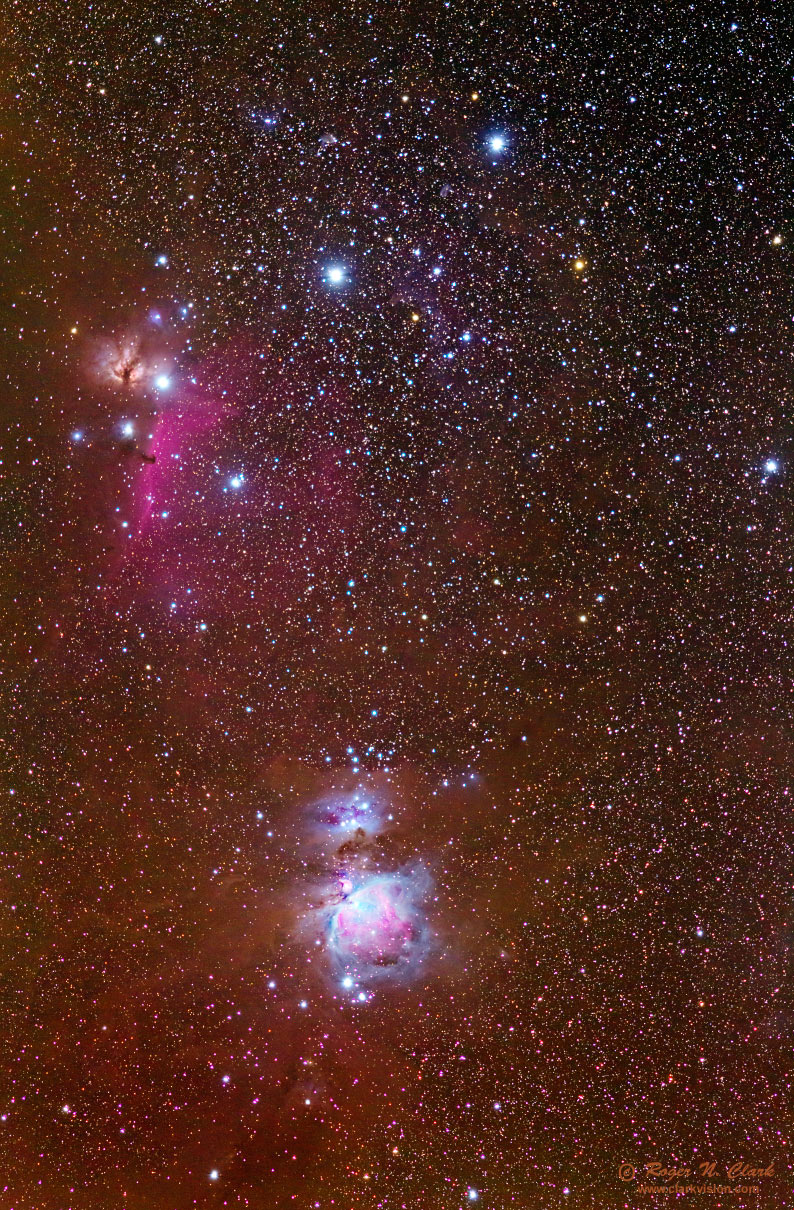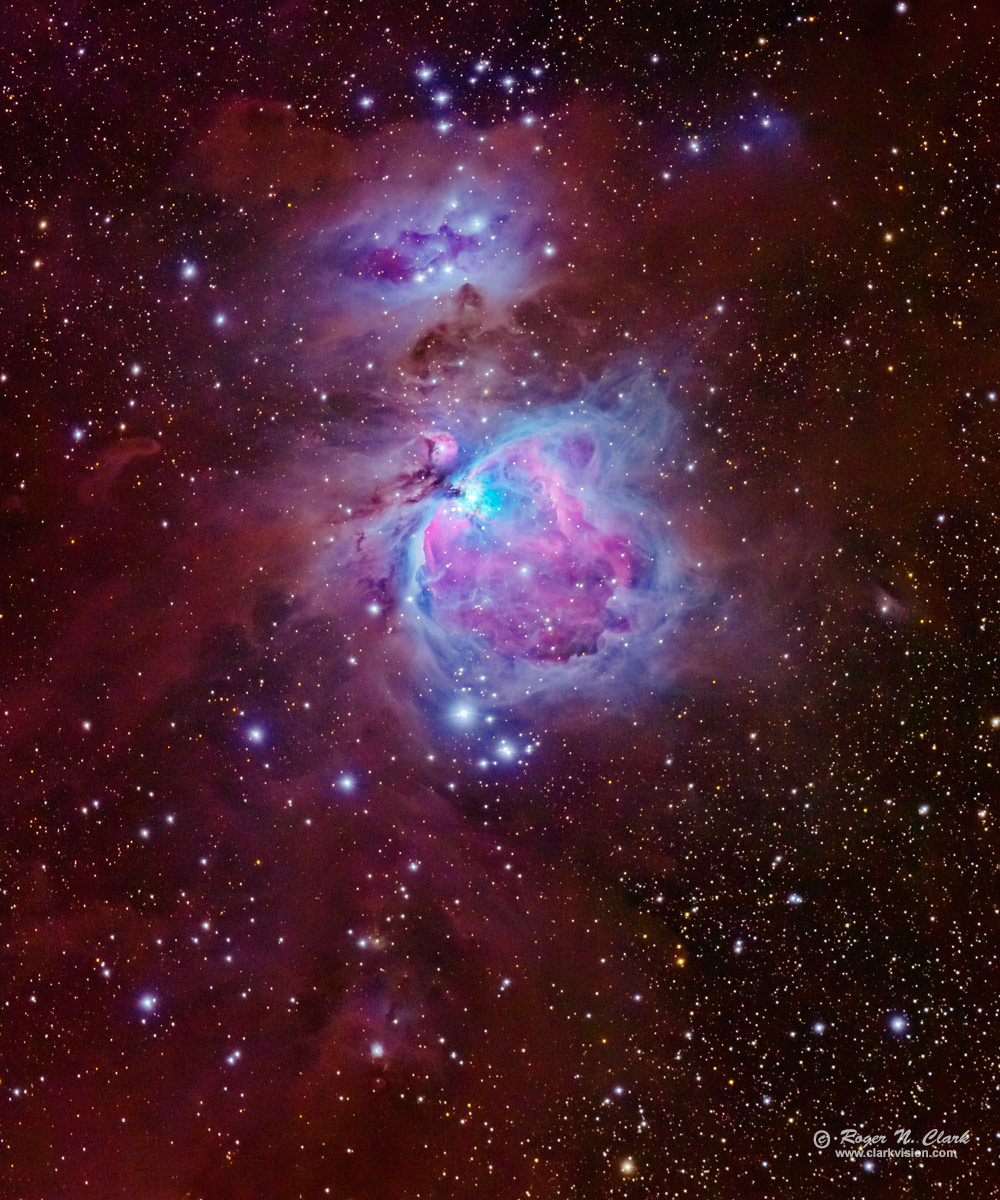ClarkVision.com
| Home | Galleries | Articles | Reviews | Best Gear | Science | New | About | Contact |
Astrophotography and Focal Length:
What Can You Image with Various Lenses?
by Roger N. Clark
| Home | Galleries | Articles | Reviews | Best Gear | Science | New | About | Contact |
by Roger N. Clark
People new to astrophotography often ask what does one need to do astrophotography? You do not need a big telescope. Standard photographic lenses can make great astrophotos.
The Night Photography Series:
The page shows a series of images zooming in on the constellation Orion, from 35 mm to 300 mm on crop cameras. One does not need a telescope to do a lot of astrophotography. Keys are fast lenses to collect a lot of light and a dark site away from cities.
Constellations can be imaged with wide angle lenses on crop and full frame cameras. The best wide angle fast and reasonably priced lenses are Sigma Art 24 mm f/1.4, a Sigma 35 mm f/1.4 DG HSM lens amd Sigma Art 50 mm f/1.4. Of the three lenses, the Sigma 35 f/1.4 is significantly better than the others for star images near the edges and corners of the frame.

At around 200 mm focal length, images show details in the classic large deep sky objects, such as the Horsehead nebula and the Great Orion nebula in Figure 2. This focal length is goo for recording the many star fields and dusty regions in the Milky way.

At 300 mm focal length, combined with excellent low light high megapixel digital cameras like the Canon 7D Mark II with 4.09 micron pixels records fine details in may deep sky objects. Figures 3, 4 , and 5 show the same image zooming on on the Orion nebula to show the details that can be recorded.
A 300 mm focal length lens with a camera with 4.1 micron pixels, resolves 2.8 arc-seconds per pixel. It is hard to actually record more detail than about 2 arc-seconds in long exposures due to atmospheric turbulence. Thus, it is rare that one would need focal length longer than about 600 mm with such cameras.



You can make great images with a standard DSLR and a range of standard focal length telephoto lenses. Lenses at 200 mm f/2.8 and lower are not too expensive, but 300 mm f/2.8 is. If for example, you use a 300 f/4 lens, exposure times to get to the same faint level will be 4 times longer.
These images were tracked with an Astrotrac. Shorter than about 200 mm one could use and iOptron Skytracker or similar.
These images were also made with simplified post processing, with no dark frames, no flat fields and no bias frames. These are no longer needed with quality recent DSLRs.
References and Further Reading
Clarkvision.com Astrophoto Gallery.
Clarkvision.com Nightscapes Gallery.
The Night Photography Series:
| Home | Galleries | Articles | Reviews | Best Gear | Science | New | About | Contact |
http://clarkvision.com/articles/astrophotography.and.focal.length
First Published April 20, 2015
Last updated January 21, 2016